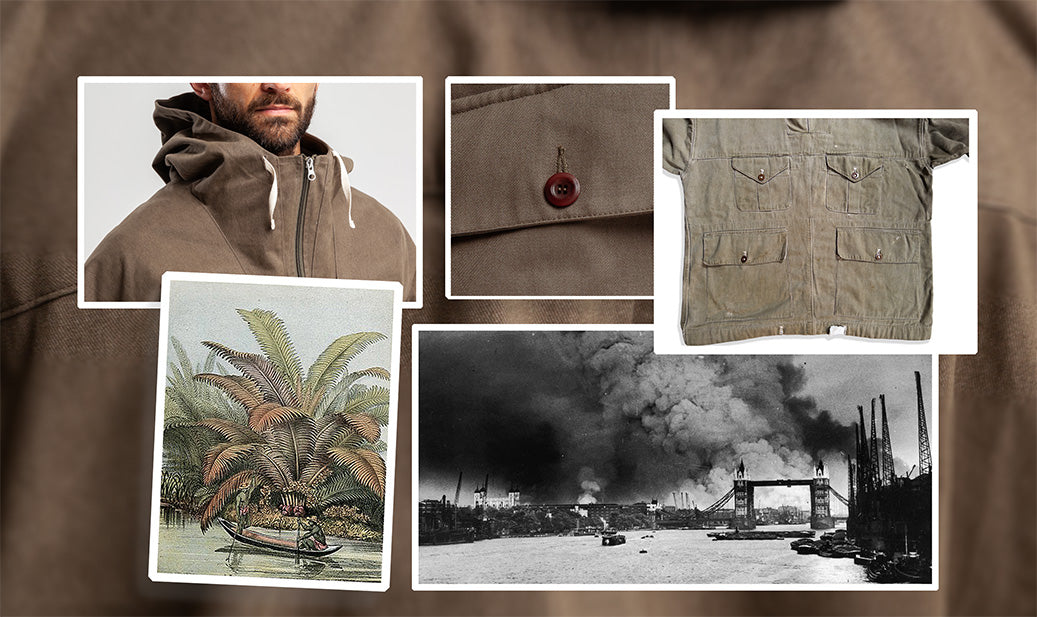
Avre Friday Briefing #33
Original vs Ours: The Details That Matter
This week we've been comparing our Batch #2 smock against an original 1941 garment. When you're committed to authenticity, it's the details that count.
The pockets

The original (right) featured large, utilitarian pockets designed for carrying anything from maps to rations and kit. We've matched the dimensions and reinforced stitching exactly. Practical then, practical now.
The hood

One of the smock's most distinctive features. A lovely funnel shaped neck to keep you warm when the wind whips up and an easily deployable hood when the weather turns. Our version replicates this functionality, including the herringbone cotton drawstrings which give you an extra layer of protection against the elements.
The buttons

Which brings us to something special we've been working on with a small manufacturer in the Cotswolds.
Buttons That Grow on Trees

Our Batch #2 buttons are made from Corozo—also known as 'vegetable ivory'. It's derived from the nut of the Tagua Palm, which grows in the equatorial rainforests of Ecuador.
Here's what makes it remarkable: it takes 15 years for a Tagua tree to mature enough to produce its first crop. But once mature, that same tree will continue producing nuts for over a century. Each year, a single tree yields around 1,800 nuts—enough for thousands of buttons.
The nuts fall naturally when ripe, so there's no harvesting or cutting of the tree itself. And because Corozo is such a valuable crop, Ecuador's rainforests are being maintained rather than cleared. When you buy a jacket with Corozo buttons, you're indirectly helping to preserve ancient rainforest.
It's a small detail, but it matters. Just like the original smocks were built to last decades, we're using materials that respect both craft and environment.
Battle of Britain: Attack of the Eagles
Episode 3 of James and Al's series is now live. This one covers Eagle Day and the Luftwaffe's assault on Britain during summer 1940.
They explore why German intelligence so badly underestimated RAF defences, the role of "The Few," and how Britain survived the decisive battles of August 1940. Worth watching for the breakdown of 18 August—"The Hardest Day"—when escort failures and poor coordination cost the Luftwaffe dearly.
Watch now on WW2 Headquarters YouTube.
This Week in 1940
3 Oct 1940
The Luftwaffe continued night raids on London. Liverpool was also heavily bombed as German strategy shifted from daylight fighter sweeps to nocturnal attacks on cities and ports.
Context
By early October, the Blitz was in full swing. Fighter Command had successfully defended against daylight raids, forcing the Luftwaffe to switch tactics.
